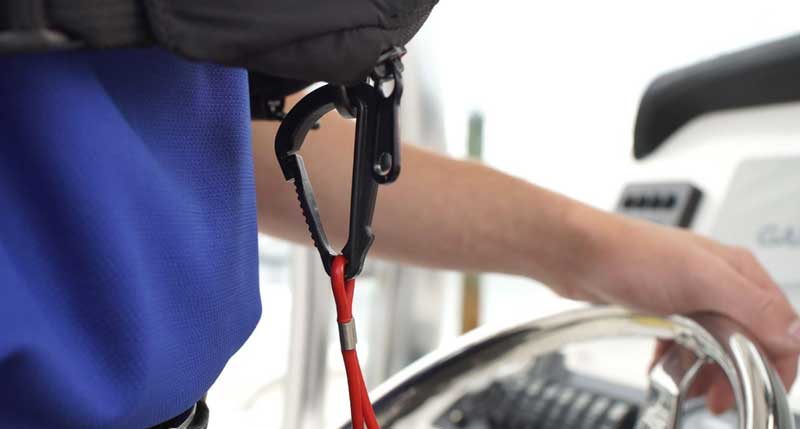Last summer was the first full season boaters were required to use an engine cutoff switch as a result of a new law that went into effect on April 1, 2021. The law mandates the use of either a helm or outboard lanyard or wireless engine cutoff switch (ECOS) on certain vessels less than 26 feet when traveling on plane or above displacement speed.

BoatUS Foundation offers tips for wearing your Engine Cutoff Switch lanyard:
Wrist-worn lanyards that have a quick-adjust hook-and-loop strap are commonly used on personal watercraft and may also work well at the helm of a powerboat. Lifejackets often have a plastic ring to connect a lanyard clip, while pant belt loops are also convenient. Some boaters even secure the ECOS lanyard around a thigh or ankle. Just use caution to not overstretch the lanyard.
Typical ECOS lanyards are 48 to 72 inches when fully extended. It’s okay to adjust the lanyard length based on boat configuration and operator location.
Some ECOS devices eliminate the lanyard and rely on wireless proximity devices to shut down an engine if the operator goes overboard. While these wireless ECOS, typically worn as a bracelet or fob, cost more and require more care, they may be the easiest to wear for some boaters. Fobs can also be attached to a lanyard and worn around the neck, placed in a pocket, or clipped to a belt or life jacket.
No matter which kind of ECOS used, boaters need to learn how to bypass, rearm, or reset an ECOS quickly in the event of an activation. Read the manual and practice at the dock.
When you welcome guests and crew aboard, tell them how the ECOS works, and the potential hazard created by ECOS activation and rapid deceleration. Have everyone keep clear of the lanyard.
Plastic lanyard clips can become brittle, metal clips can corrode, and the lanyard line can lose elasticity. These items are inexpensive to replace, and it is good practice to keep a spare aboard in case the captain goes overboard and the crew needs to facilitate a swift and safe retrieval. Be sure to let your crew know where the spare is located in your pre-trip briefing.